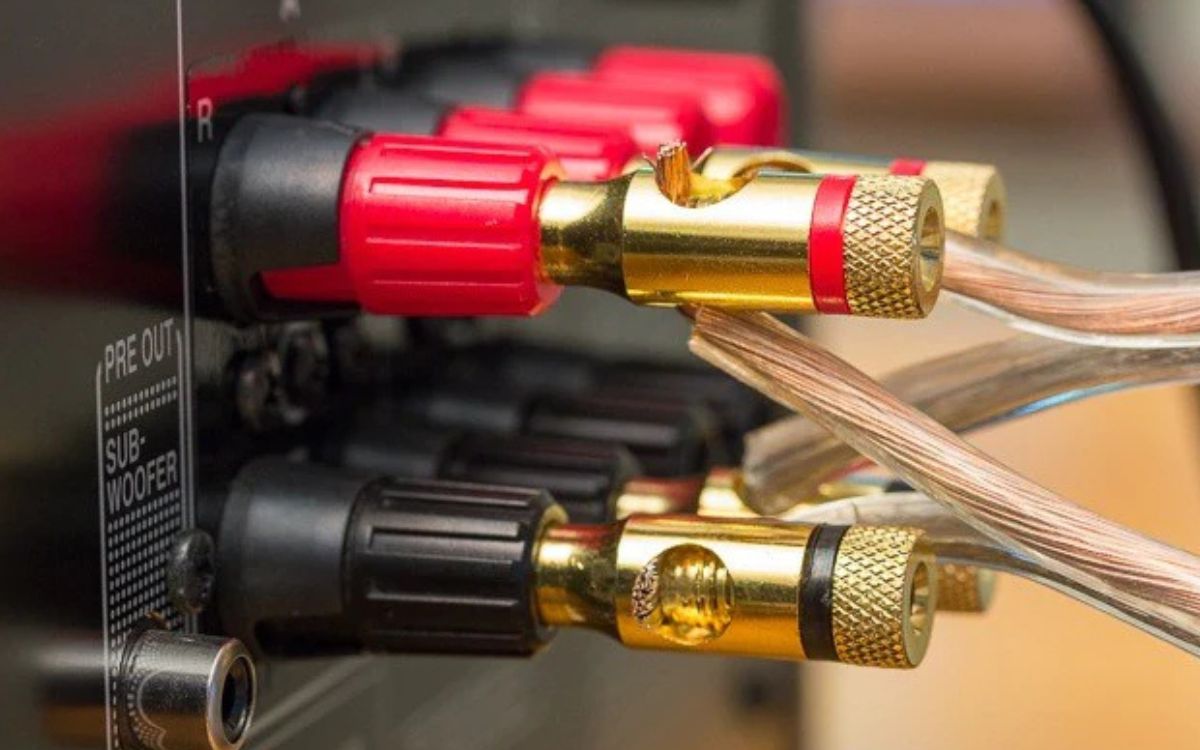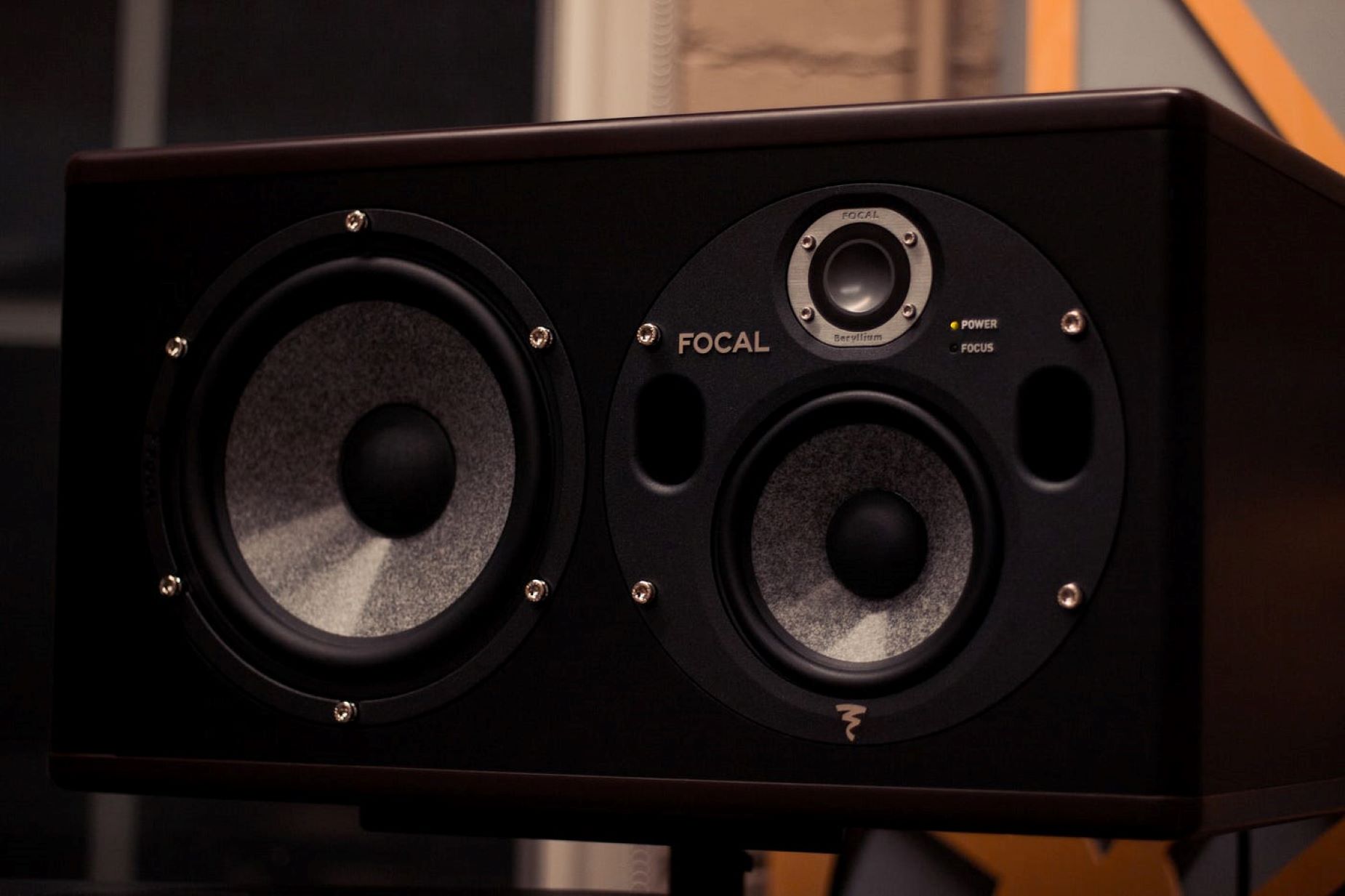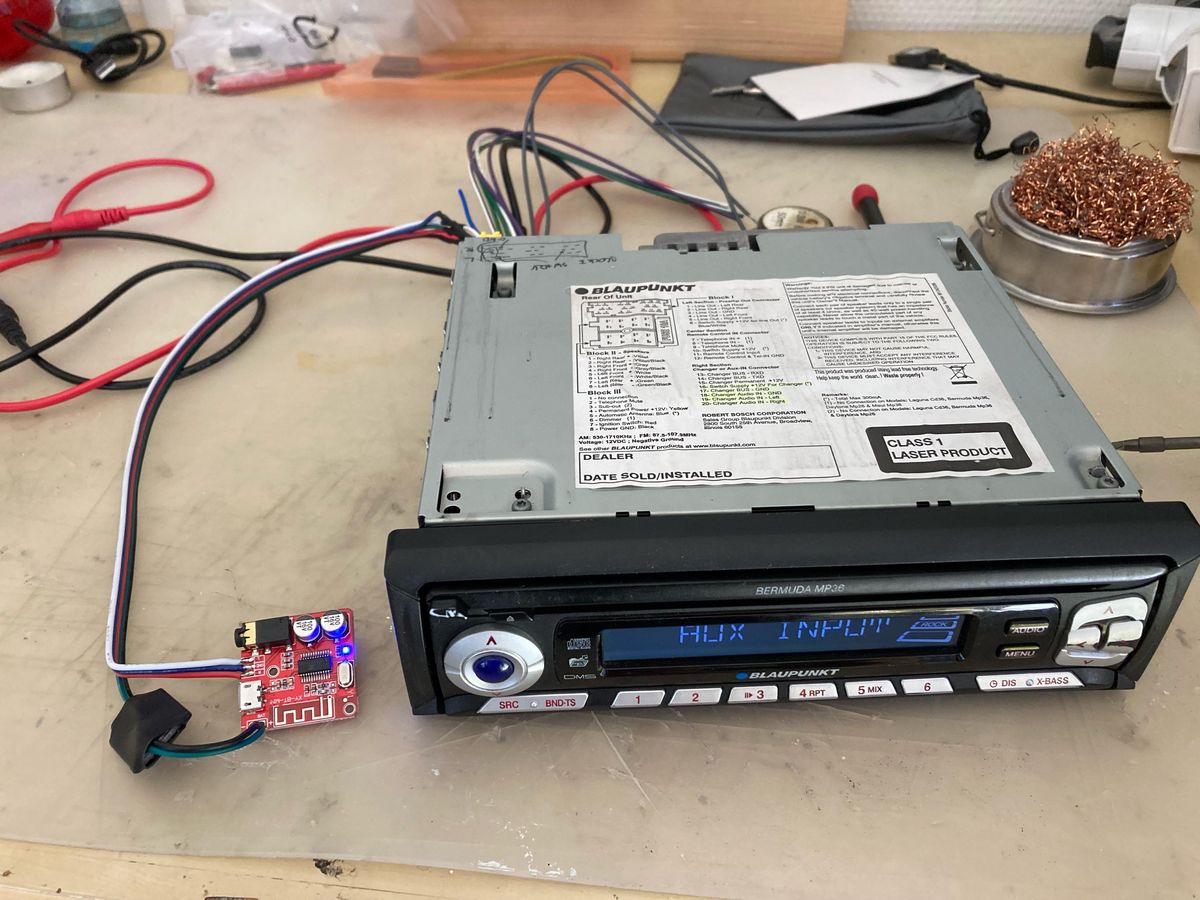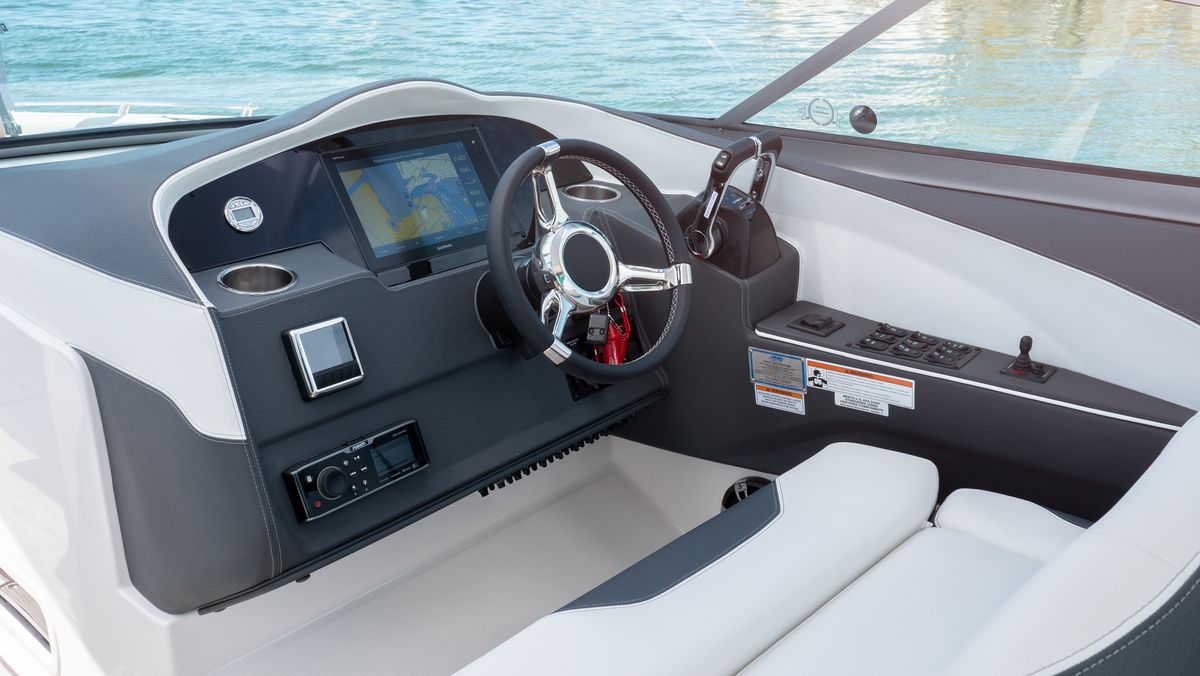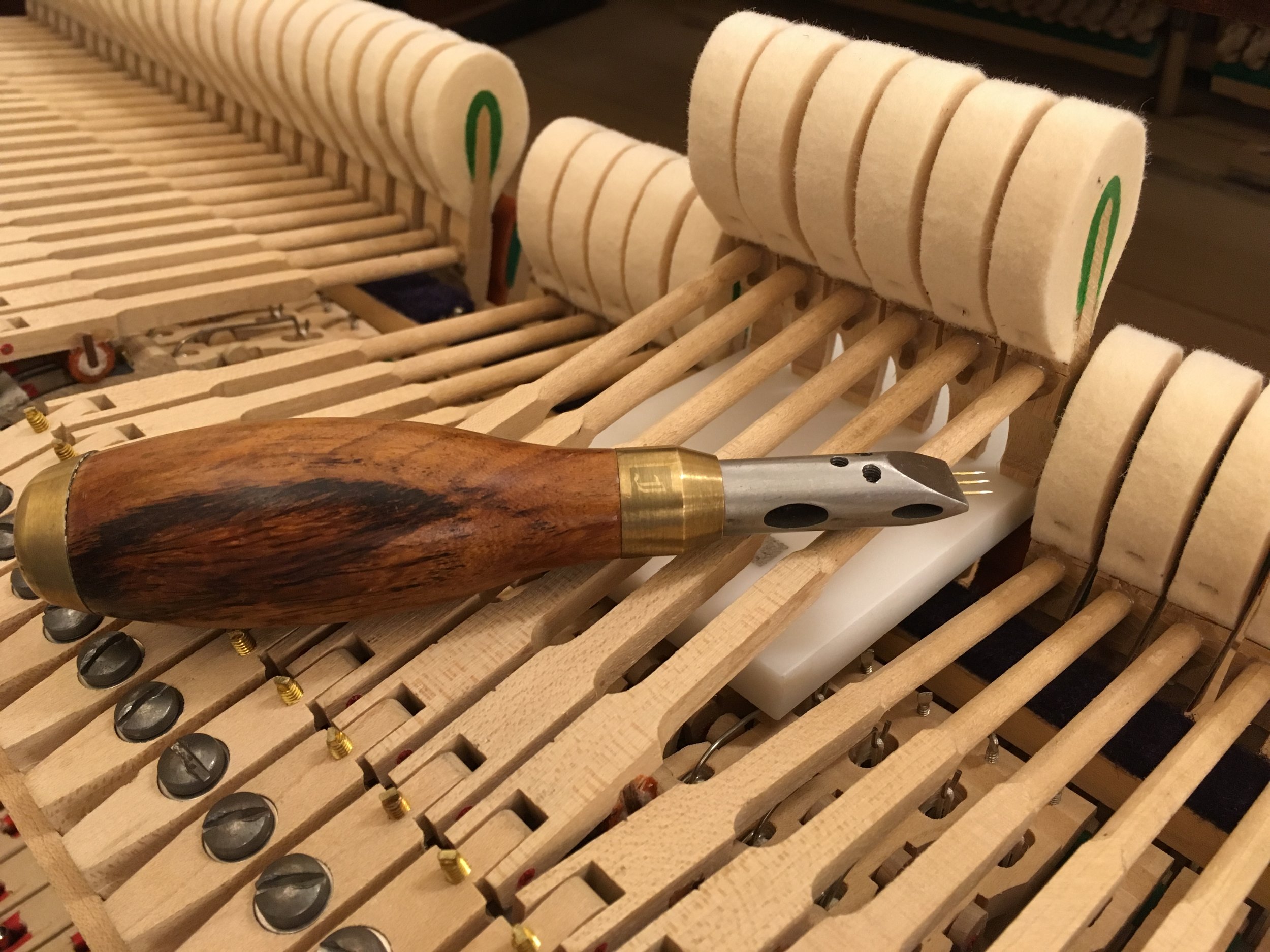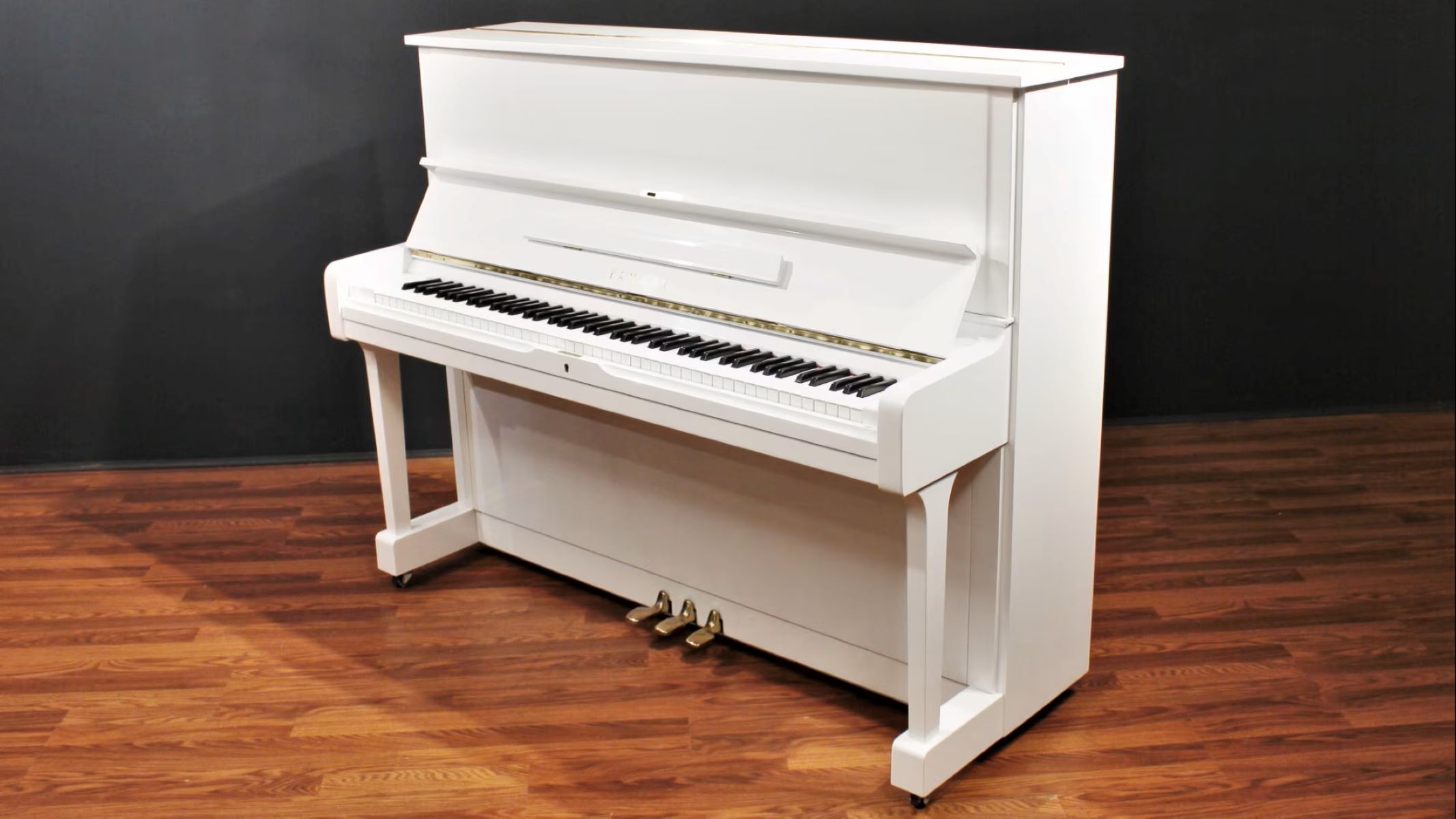Home>Instruments>Piano>What Is Piano Wire
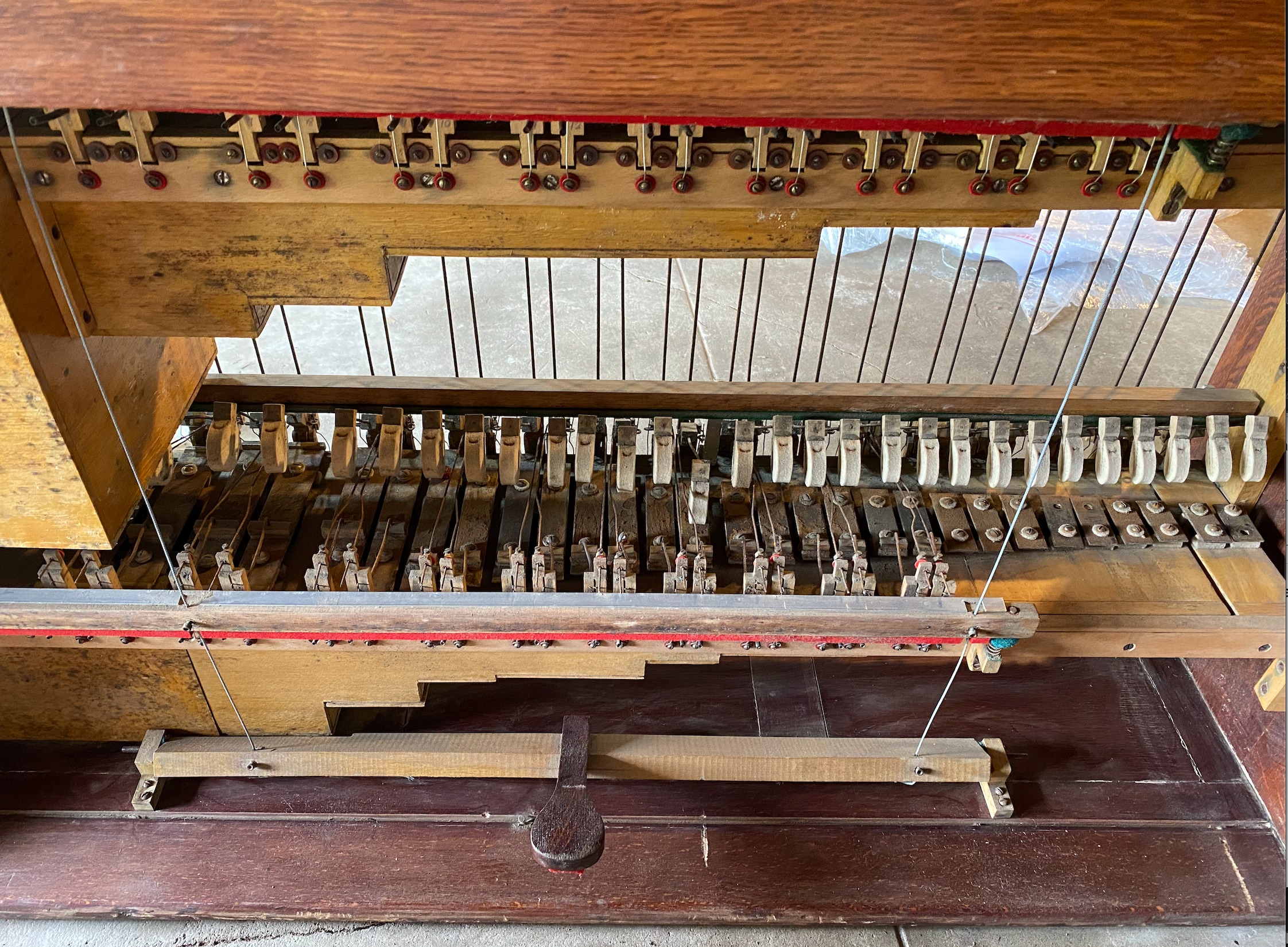

Piano
What Is Piano Wire
Published: February 10, 2024
Discover the properties and uses of piano wire, an essential component in piano manufacturing and other applications. Learn about the materials, sizes, and manufacturing processes involved.
(Many of the links in this article redirect to a specific reviewed product. Your purchase of these products through affiliate links helps to generate commission for AudioLover.com, at no extra cost. Learn more)
Table of Contents
**
Introduction
**
The piano, an iconic and versatile musical instrument, has been captivating audiences for centuries with its melodic tunes and timeless appeal. At the heart of this instrument lies a crucial component that often goes unnoticed – piano wire. Also known as music wire, this essential element forms the basis of the piano's unique sound and enduring resonance.
Piano wire is a high-carbon steel wire that plays a pivotal role in producing the distinct notes and harmonious melodies that define the piano's enchanting sound. Its exceptional strength, flexibility, and resilience enable it to withstand the rigorous demands of piano playing, making it an indispensable component of this beloved instrument.
This article delves into the fascinating world of piano wire, exploring its history, composition, uses, manufacturing process, properties, and maintenance. By unraveling the intricacies of piano wire, we gain a deeper appreciation for the craftsmanship and engineering that underpin the art of piano making, as well as the enduring allure of this timeless instrument.
History of Piano Wire
The history of piano wire is intertwined with the evolution of the piano itself, dating back to the instrument’s early origins in the 18th century. As the piano underwent a series of transformative developments, so too did the wire that gives it its distinctive voice.
During the formative years of the piano, craftsmen experimented with various materials to create strings capable of producing rich, resonant tones. Traditional materials such as gut and brass were initially utilized, but it was the discovery of high-carbon steel that revolutionized the sound and durability of piano strings. This marked a significant turning point in the instrument’s history, paving the way for the widespread adoption of piano wire.
One of the key milestones in the history of piano wire occurred in the 19th century, when advances in metallurgy and manufacturing techniques led to the production of high-quality steel wire with superior tensile strength and elasticity. This breakthrough not only enhanced the tonal quality and responsiveness of piano strings but also contributed to the overall refinement of the instrument’s construction.
Throughout the centuries, the art of piano making has continued to evolve, driven by a quest for innovation and excellence. This ongoing pursuit has seen the refinement of piano wire manufacturing processes, resulting in strings that offer unparalleled precision, consistency, and longevity.
Today, the legacy of piano wire endures as a testament to the enduring craftsmanship and ingenuity that have shaped the evolution of the piano. Its rich history is a testament to the unwavering commitment to excellence and sonic innovation that continues to define the art of piano making.
Composition of Piano Wire
Piano wire, also known as music wire, is crafted from high-carbon steel, a material renowned for its exceptional strength, resilience, and flexibility. This steel alloy is meticulously engineered to meet the exacting standards required for producing the strings that form the core of the piano’s melodic range.
The composition of piano wire is characterized by its high carbon content, typically ranging between 0.6% and 1.0%, which imparts the wire with its signature tensile strength and elasticity. This elevated carbon concentration enables the wire to withstand the immense tension exerted by the piano’s strings without succumbing to deformation or breakage, ensuring sustained tonal integrity and longevity.
In addition to its high carbon content, piano wire undergoes a meticulous process of drawing and annealing to further enhance its mechanical properties. Through a series of precision manufacturing steps, the wire is meticulously drawn to achieve the desired diameter and then subjected to annealing, a heat treatment process that optimizes its ductility and stress resistance.
The resulting composition of piano wire is a testament to the fusion of metallurgical science and artisanal craftsmanship, culminating in a material that embodies the perfect balance of strength, resilience, and responsiveness. This composition is the cornerstone of the piano’s ability to produce a diverse range of tones, from the gentlest whispers to the most thunderous crescendos, all while maintaining exceptional clarity and sustain.
Uses of Piano Wire
While piano wire is integral to the construction of pianos, its applications extend far beyond the realm of musical instruments. The exceptional properties of piano wire make it a versatile material with a wide range of uses across various industries and artistic pursuits.
1. Musical Instruments: The most renowned application of piano wire is, of course, in the construction of pianos. The strings of a piano, meticulously crafted from high-quality piano wire, are responsible for producing the instrument’s diverse range of notes and harmonics. Additionally, piano wire is utilized in other stringed instruments such as harpsichords, dulcimers, and certain types of harps, where its exceptional tensile strength and elasticity are essential for generating clear, resonant tones.
2. Industrial Applications: Beyond the realm of music, piano wire finds extensive use in various industrial applications. Its robust nature and high tensile strength make it an ideal material for manufacturing springs, precision wire forms, and wire mesh. From automotive components to industrial machinery, piano wire plays a crucial role in ensuring the reliable operation of diverse mechanical systems.
3. Craftsmanship and Artistry: Artisans and craftsmen leverage piano wire for a myriad of creative endeavors, including jewelry making, sculpture, and wire art. The wire’s malleability and durability make it a favored material for sculpting intricate forms and creating delicate, yet resilient, structures.
4. Orthodontics and Medical Devices: In the field of orthodontics and medical device manufacturing, piano wire serves as a fundamental component for crafting dental and surgical instruments. Its exceptional flexibility and corrosion resistance make it an ideal material for producing orthodontic wires, surgical springs, and other specialized medical devices.
5. Crafting Tools and Implements: Piano wire’s versatility extends to the crafting of specialized tools and implements, including wire cutters, needle-nose pliers, and precision instruments used in electronics and watchmaking. Its exceptional strength and malleability make it an indispensable material for creating precision tools that demand durability and reliability.
From the symphonic resonance of a grand piano to the intricate precision of industrial machinery, piano wire stands as a testament to the enduring legacy of high-quality steel and its boundless applications across diverse domains.
Manufacturing Process of Piano Wire
The manufacturing of piano wire is a meticulously orchestrated process that combines metallurgical expertise with precision engineering. From the initial selection of raw materials to the final drawing and annealing stages, each step is essential in shaping the wire into a material that embodies the ideal balance of strength, resilience, and tonal clarity.
1. Raw Material Selection: The manufacturing process begins with the careful selection of high-quality steel wire rod, chosen for its specific carbon content and purity. This raw material serves as the foundation for producing piano wire of exceptional quality and consistency.
2. Wire Drawing: The selected wire rod undergoes a series of drawing processes, during which it is progressively reduced in diameter to achieve the precise dimensions required for piano wire. This meticulous drawing process imparts the wire with its characteristic tensile strength and uniformity, ensuring that it can withstand the immense tension exerted by piano strings without compromising its structural integrity.
3. Annealing: Following the wire drawing stage, the wire is subjected to annealing, a critical heat treatment process designed to optimize its mechanical properties. Through carefully controlled heating and cooling cycles, the wire is annealed to achieve the desired levels of ductility, stress resistance, and elasticity. This crucial step enhances the wire’s ability to withstand the rigorous demands of piano playing while maintaining its tonal clarity and responsiveness.
4. Surface Treatment: To further refine the wire’s surface characteristics, it may undergo additional processes such as grinding, polishing, or coating to ensure optimal performance and longevity. These surface treatments contribute to the wire’s smoothness, corrosion resistance, and overall aesthetic appeal.
5. Quality Control and Testing: Throughout the manufacturing process, stringent quality control measures are implemented to verify the wire’s mechanical properties, dimensional accuracy, and acoustic performance. This meticulous testing ensures that the piano wire meets the exacting standards required for producing strings that deliver exceptional tonal clarity, sustain, and resilience.
By harmonizing the art of metallurgy with precision engineering, the manufacturing process of piano wire culminates in the creation of a material that embodies the perfect synthesis of strength, flexibility, and sonic excellence. This meticulous process is a testament to the unwavering commitment to craftsmanship and innovation that defines the art of piano wire manufacturing.
Properties of Piano Wire
Piano wire possesses a unique set of properties that distinguish it as a material of exceptional quality, precision, and sonic capability. These inherent characteristics are instrumental in defining the distinct tonal qualities and enduring resilience that have cemented piano wire’s status as an indispensable component of musical craftsmanship.
1. Tensile Strength: One of the defining properties of piano wire is its remarkable tensile strength, which enables it to withstand the immense tension exerted by piano strings without succumbing to deformation or breakage. This exceptional strength is essential for preserving the structural integrity of the strings and ensuring sustained tonal clarity and longevity.
2. Resilience and Elasticity: Piano wire exhibits exceptional resilience and elasticity, allowing it to flex and vibrate in response to the pianist’s touch. This inherent flexibility contributes to the wire’s ability to produce a diverse range of tones, from delicate pianissimos to powerful fortissimos, while maintaining exceptional clarity and sustain.
3. Uniformity and Consistency: The manufacturing process of piano wire is meticulously engineered to yield a material of unparalleled uniformity and consistency. Each strand of wire is crafted to exacting specifications, ensuring that it possesses uniform mechanical properties and acoustic characteristics, thereby contributing to the instrument’s harmonic balance and responsiveness.
4. Corrosion Resistance: Piano wire is engineered to exhibit superior corrosion resistance, safeguarding it against the detrimental effects of moisture and environmental factors. This resistance ensures that the wire maintains its structural integrity and sonic performance over time, even in demanding playing conditions.
5. Sonic Clarity and Sustain: The properties of piano wire are finely tuned to deliver exceptional sonic clarity and sustain, allowing the strings to resonate with crystalline purity and enduring resonance. This sonic excellence is a testament to the wire’s precise composition, which enables it to produce rich, harmonically complex tones with remarkable depth and nuance.
6. Malleability and Workability: Despite its exceptional strength, piano wire exhibits a degree of malleability and workability that facilitates its shaping and installation within the piano. This property allows craftsmen to manipulate the wire with precision, ensuring that it conforms to the instrument’s design while maintaining its structural integrity and tonal characteristics.
These properties collectively underscore the unparalleled craftsmanship and sonic excellence embodied by piano wire, elevating it as a material that transcends its functional role to become a hallmark of musical artistry and enduring quality.
Maintenance of Piano Wire
Effective maintenance of piano wire is essential for preserving the instrument’s tonal integrity, responsiveness, and longevity. By implementing proper care and upkeep practices, musicians and piano technicians can ensure that the piano’s strings remain in optimal condition, allowing for the continued production of rich, resonant tones and harmonious melodies.
1. Regular Tuning: Regular tuning is a fundamental aspect of piano wire maintenance, as it ensures that the strings are correctly tensioned to produce the intended pitches. Over time, the tension in piano strings can fluctuate due to environmental factors and playing frequency, necessitating periodic adjustments to maintain precise pitch and tonal balance.
2. Environmental Control: Maintaining a stable and moderate environment is crucial for preserving the condition of piano wire. Fluctuations in temperature and humidity can impact the tension and elasticity of the strings, potentially leading to tuning instability and structural stress. By regulating the piano’s environment, ideally with a humidity control system, the integrity of the wire can be safeguarded against adverse climatic effects.
3. Cleaning and Lubrication: Regular cleaning and lubrication of the piano’s strings contribute to their longevity and sonic performance. Removing accumulated dust and debris from the strings helps prevent abrasive wear and maintains their acoustic clarity. Additionally, applying a specialized string lubricant can minimize friction and prolong the lifespan of the wire, ensuring smooth vibration and sustained resonance.
4. Inspection and Replacement: Periodic inspection of the piano wire is essential for identifying signs of wear, corrosion, or structural fatigue. Any compromised or worn-out strings should be promptly replaced to uphold the instrument’s tonal consistency and prevent potential performance issues. Thorough inspection by a qualified piano technician can detect early indications of string deterioration and facilitate timely replacements as needed.
5. Protection from Impact and Stress: Preventing undue stress and impact on the piano’s strings is vital for preserving their structural integrity. Care should be taken to avoid excessive force or impact on the strings during tuning, maintenance, or performance, as such stress can compromise their tensile strength and tonal clarity. Additionally, safeguarding the piano from physical impacts and potential damage helps protect the strings from unnecessary strain.
By adhering to these maintenance practices, piano owners and technicians can uphold the pristine condition of the instrument’s wire, ensuring that it continues to deliver the exceptional tonal quality and responsiveness that define the timeless allure of the piano.
Conclusion
The enduring legacy of piano wire is a testament to the harmonious convergence of artistry, precision engineering, and sonic innovation. From its humble origins to its widespread applications across diverse domains, piano wire stands as a symbol of enduring craftsmanship and sonic excellence.
Throughout history, piano wire has played a pivotal role in shaping the evolution of the piano, contributing to its distinct tonal qualities and enduring resonance. The meticulous manufacturing process and exceptional properties of piano wire underscore its status as a material of unparalleled strength, resilience, and sonic clarity, serving as the foundational element that gives the piano its timeless voice.
Moreover, the uses of piano wire extend far beyond the realm of musical instruments, encompassing a diverse array of applications in industrial, artistic, and medical domains. Its versatility and exceptional properties have positioned piano wire as a material of enduring relevance and boundless potential, transcending its origins to become a hallmark of quality and innovation.
As custodians of this remarkable material, musicians, craftsmen, and technicians bear the responsibility of preserving the integrity of piano wire through diligent maintenance and care. By upholding the highest standards of upkeep and attention, they ensure that the piano’s strings continue to resonate with crystalline purity and enduring resonance, perpetuating the timeless legacy of this iconic instrument.
In essence, the story of piano wire is a testament to the enduring marriage of art and science, craftsmanship and innovation. Its journey from raw steel to the soul-stirring melodies that emanate from the piano strings encapsulates the essence of human creativity and ingenuity, reminding us of the profound impact that a seemingly humble material can have on the world of music and beyond.
Ultimately, the legacy of piano wire serves as a resounding testament to the enduring power of craftsmanship, innovation, and sonic artistry, weaving a narrative that resonates across centuries and continues to inspire generations of musicians, artisans, and enthusiasts.

